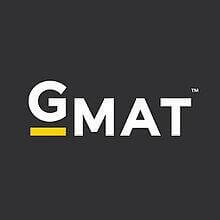

The Graduate Management Admission Test (GMAT®) is a Computer Adaptive Test administered at centers throughout the world.
Competitive business schools around the world use this test as criteria for admission into graduate programs (Master of Science) or MBA.
The GMAT® consists of three main parts that measure verbal, mathematical, and analytical and writing skills developed over time. The whole test takes about four hours to complete, including two optional breaks.
The Analytical Writing Assessment (AWA) consists of two writing tasks. In the first, the student must analyze an argument and in the second, the student must analyze an issue. Each response must be written within 30 minutes and is scored on a scale of 0-6, with 6 being the highest score and 0 the lowest.
The arguments and issues presented on the test regard topics of general interest related to business or a variety of other subjects. In the AWA only the student’s capacity to write analytically is assessed, therefore a specific knowledge of the essay topic is not necessary.
The AWA scores are computed separately from the other sections of the GMAT® and have no effect on the Verbal, Quantitative, or total scores. Over the 3 years concluding in March 2011 the mean score was 4.4.
The institutions the examinee has designated to receive his/her scores may choose to receive a copy of the responses to the AWA. However, the student’s score report does not include a copy of the essays.
The Quantitative section of the GMAT® measures the ability to solve quantitative problems, reason quantitatively and interpret graphic data. It requires knowledge of arithmetic, elementary algebra and commonly known concepts of geometry.
This section consists of 37 multiple-choice questions, which must be answered within 75 minutes. Two types of questions are presented – Problem Solving and Data Sufficiency questions. These types of questions are intermingled throughout the section.
The quantitative section is scored from 0 to 60 points. Over the 3 years ending in March 2011, the mean score was 36.2/60; scores above 50 and below 7 are rare.
Problem-solving questions:
These questions are designed to test basic mathematical skills, understanding of elementary mathematical concepts, and the ability to reason quantitatively and solve quantitative problems.
Problem-solving questions present multiple-choice problems in arithmetic, basic algebra, and elementary geometry. The test taker must solve the problems and choose the correct answer from five possible choices. One and only one of the answers is ever correct. Some problems will be plain mathematical calculations; others will be presented as real life word problems that will require mathematical solutions.
Data sufficiency questions:
These are designed to measure the student’s ability to analyze a quantitative problem, recognize which information is relevant, and determine at what point there is sufficient information to solve a problem.
Data sufficiency is a unique type of math question created especially for the GMAT®. The student is presented with a question with two statements that provide information which might be useful in answering the question. The candidate must then decide whether the information given is sufficient to answer the question. He/she may determine that:
(A) Statement 1 ALONE is sufficient to answer the question, but statement 2 alone is not sufficient.
(B) Statement 2 ALONE is sufficient to answer the question, but statement 1 alone is not sufficient.
(C) BOTH statements (1) and (2) TOGETHER are needed to answer the question, but NEITHER statement ALONE is sufficient.
(D) EACH statement ALONE is sufficient to answer the question.
(E) Statements (1) and (2) TOGETHER are NOT sufficient to answer the question, and additional data specific to the problem are needed.
The Verbal section of the GMAT® measures the student’s ability to read and comprehend written material, reason and evaluate arguments and correct written material to conform to standard written English.
This section consists of 41 multiple-choice questions which must be answered in 75 minutes. The verbal section is scored from 0 to 60 points. Over the 3 years ending in March 2011, the mean score was 27.6/60; scores above 44 and below 9 are rare.
There are three types of questions in the Verbal section: reading comprehension, critical reasoning, and sentence correction.
Reading Comprehension:
This tests the student’s capability to understand the substance and logical structure of a passage, analyze it and apply information and concepts presented in it. It evaluates the examinee’s ability to understand words and statements, understand the logical relationships between significant points and concepts, draw inferences from facts and statements, and understand and follow the development of quantitative concepts as they are presented in verbal material.
The examinee is presented with texts of approximately 200 to 350 words, covering topics from social sciences, physical or biological sciences, and business-related areas (marketing, economics, human resource management, etc.). Each passage has three or more questions about the main point of the passage, what the author specifically states, what can be logically inferred from the passage, and the author’s attitude.
Critical Reasoning:
Critical reasoning questions test the examinee’s reasoning skills regarding a premise, a conclusion, an assumption, or a logical structure. This section measures the student’s ability to reason in three areas:
Sentence Correction:
Sentence correction questions are designed to test the student’s proficiency in two areas: correct expression and effective expression. A correct sentence is structurally and grammatically accurate. An effective sentence expresses an idea in a clear and concise way.
These types of questions consist of a sentence that is completely or partially underlined. The underlined portion may or may not be correct. The examinee is asked to choose from five different sentences, or portions of sentences, the one that is correct and most effective. The first option is always exactly the same as the original underlined phrase.
To succeed in today’s business world you’ll need to analyze information from a variety of
sources, develop strategies and make decisions based on that information. The Integrated
Reasoning section of the GMAT measures your ability to solve problems in this area.
Integrated Reasoning consists of four question types, which require you to analyze and
synthesize data in different formats and from multiple sources.
At the beginning of the Quantitative and Verbal sections of the test, each student is assumed to be an average test-taker and is presented with questions of average difficulty. If the examinee answers correctly, the next questions are harder. If, on the other hand, the examinee misses a question, he/she is given easier questions.
The questions are pulled from a large pool of questions and are delivered based on the student’s running score. The next question is based on the previous answer through a testing algorithm, modifying the difficulty of every question; therefore the best effort should be made on any question.
The total score, comprising the Quantitative and Verbal sections, is exclusive of the Analytical Writing Assessment and the Integrated Reasoning, and ranges from 200 to 800. Statistically, about two-thirds of test takers score between 400 and 600, with a mean score slightly higher than 500.
The score is determined by the number of questions the examinee answers, whether the answers are correct or incorrect, and the level of difficulty and other statistical characteristics of each question.
On the score report, the test taker receives the scores for the Quantitative and Verbal sections separately, together with a percentile score that allows him/her to compare his/her performance with that of other test takers.
The test taker also receives a separate AWA score. This score is computed separately and has no effect on the Quantitative, Verbal, or overall score.
Like the AWA, the IR scores are computed separately from the Quantitative and Verbal
sections and have no effect on the Total score.
The examinee can see his/her unofficial score for the Verbal and Quantitative sections immediately after completing the computer adaptive test. The official score is sent to the test taker and to the designated institutions about two weeks after the test. If the test is taken outside the USA, the delivery of the score reports may take longer.
Scores are valid for a maximum of 5 years from the date the student sits for the exam until the date of matriculation (not application) to the chosen institution.
The courses are structured in two sections:
Classes to prepare for the Quantitative section and for the Critical Reasoning part of the Verbal section are held by a professor who holds a Ph.D. in quantitative business analysis.
Classes to prepare for the Reading Comprehension and Sentence Correction parts of the Verbal Section are held by qualified native speakers with experience in international examinations.
On request preparatory courses for the Analytical Writing Assessment and Integrated Reasoning can also be provided.
The length of the course is dependent on the students’ starting level.
The courses are structured in four sections:
The length of the course is dependent on the students’ starting level.
Classes to prepare for the Quantitative section and for the Critical Reasoning part of the Verbal section are held by a professor who holds a Ph.D. in quantitative business analysis.
Classes to prepare for the AWA and the Reading Comprehension and Sentence Correction parts of the Verbal Section are held by qualified native speakers with experience in international examinations.

Effettua il nostro Test Online gratuito e verifica la conoscenza della lingua.
Puoi scegliere 4 lingue tra inglese, francese, tedesco e spagnolo.
Riceverai subito il risultato via mail, così potrai frequentare il corso più adatto a te!
Se hai bisogno di metterti in contatto con la nostra sede o vuoi avere maggiori informazioni sui nostri corsi di lingua o sui servizi che eroghiamo, clicca sul pulsante “Richiedi informazioni”.



Abbey School® – P.Iva 11439480010 C.F. 97780960015
